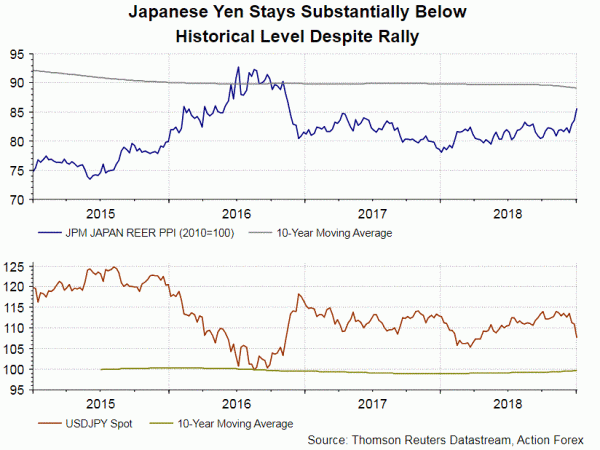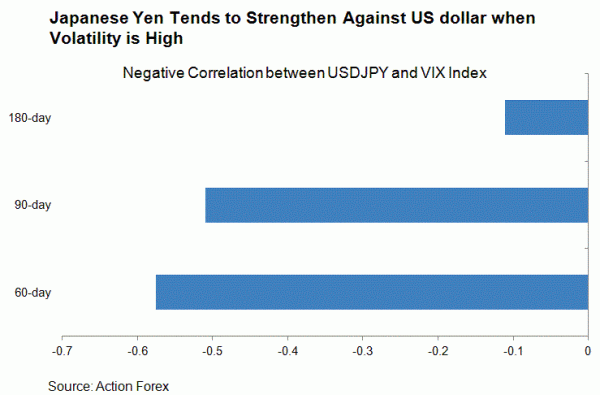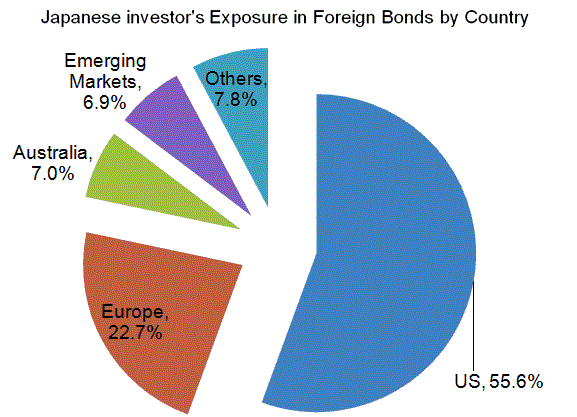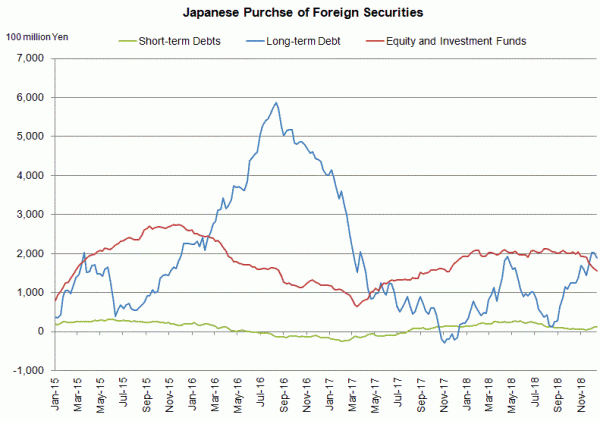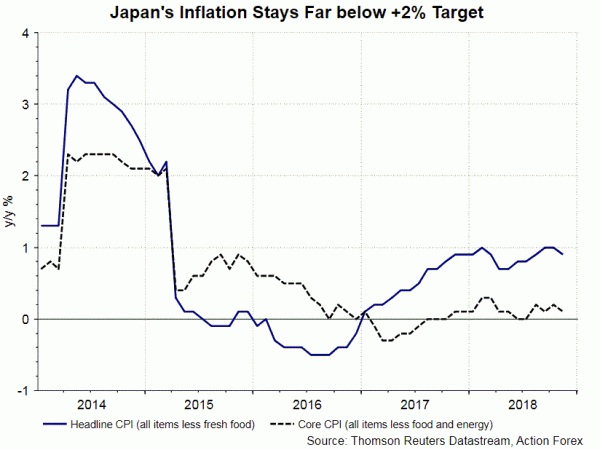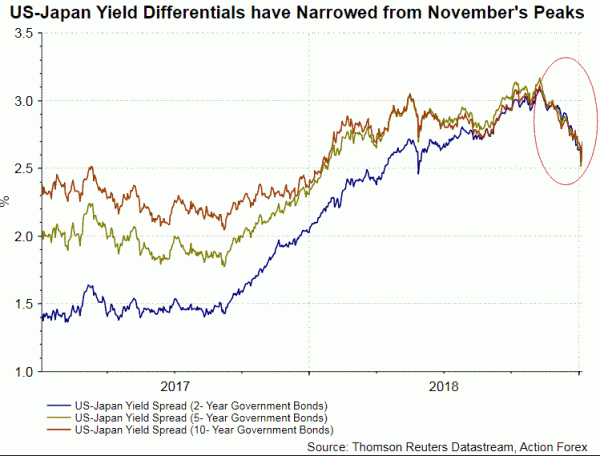We are not convinced that the “flash crash” of USDJPY last Thursday was driven by Apple.Inc’s lowering of guidance, especially on China. The rally in Japanese yen during the time did not just appear in USDJPY, but also other JPY-crosses, such as AUD and TRY. There are factors underlying JPY that caused such rally. Indeed, strength in JPY would likely persist in 2019. Besides valuation, safe-haven demand amidst risk-averse market environment, liquidation of foreign investment positions by Japanese investors and slower rate hike path by the Fed are factors supporting the yen this year.
Valuation
USDJPY declined for a third consecutive year in 2018. Yet, this has not made Japanese yen overvalued. The chart below shows that USDJPY has been trading above its 10-year moving average since mid-2016 (lower pane), while the real effective JPY index has been consistently moving below the 10-year average since late 2016. Traders adopting mean reversion strategy would continue to bet for higher yen.
Safe haven Demand
US-China trade war, Brexit uncertainty, political turmoil in the Eurozone and unrests in some emerging economies have restrained risk appetite, leading many to seek safe investments. Japanese yen is a typical safe-haven asset. Due to the low yields, JPY has been a darling in carry trades (a strategy in which investor borrow money at a low interest rate and invest in an asset (risky asset) that is likely to provide a higher return). JPY, hence, strengthens during periods of risk aversion as traders square their carry trade positions and repay their borrowed money. Japanese yen performs well during huge market volatility. Our data shows that USDJPY and VIX index (fear index) are negatively correlated. That is JPY appreciates against USD when risk aversion intensifies.
The chart below shows that Japanese bond investors’ exposure is mainly in the US. Unwinding of these investments can be rapid is risk appetite diminishes and US financial markets decline further. Such scenario would send JPY higher. Indeed, the recent rally in JPY has been driven by the US-led decline in global financial markets.
BOJ’s existing monetary policy tools include keeping policy rate at -0.1%, purchasing JGBs at a pace of 80 trillion yen/ year and yield curve control (YCC) -keeping 10-year JGB yield at 0%, with trading band at +0.2% and – 0.2%. Concerning bond purchases, the actual increase in BOJ’s holdings has been falling consistently since 4Q16. The annual increase fell to 58 trillion yen and below 40 trillion yen in December 2017 and November 2018, respectively. As speculations intensified regarding BOJ tapering, Governor Haruhiko Kuroda clarified in October that the 80 trillion yen purchase is only a symbolic measure and stressed the major policy tool is YCC.
Japanese economy is recovering. Yet, the pace is still slow. Both headline and core inflation have stayed far below BOJ’s target of +2%. For the coming year, ongoing US-China trade war suggests that risk to Japanese growth is skewed to the downside. Meanwhile, trade negotiations with the US have raised the uncertainty. Speculations are rising that BOJ could revised lower its inflation target in early 2019.
Kuroda noted in mid-December that “there are more downside risks to Japan’s economy, particularly via overseas economic developments”, adding that “if we think doing so would be necessary to sustain the momentum for achieving our price target, we will ease monetary policy further as appropriate”. We doubt if there are more things that BOJ can do to stimulate the economy although the central bank stressed that it could lower interest rates further and accelerate the pace of asset buying.
Further monetary easing by BOJ should be negative for JPY. However, the impact might be watered down by Fed’s moderation in the pace of rate hikes. In the last two months, US 5-year and 10-year Treasury yields have erased most of the gains made last year. Meanwhile, US-Japan yield spreads have also narrowed across the board since early November. As such, we do not expect Japanese yen to be markedly lower if BOJ maintains the accommodative stance.




